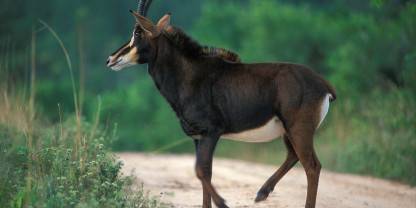Shimba Hills National Reserve’s checklist of 300 bird species includes coastal such as Fischer’s turaco, green-headed oriole, east coast akalat and Uluguru violet-backed sunbird. Grassland birding in the reserve is rewarding, but the forest, though more challenging, is where the more interesting species might be seen. These include the spectacularly noisy trumpeter hornbill and silvery-cheeked hornbill. Hot spots for forest birds include the picnic site in Mwaluganje Forest and the wooden walkways at Shimba Hills Lodge.
Birding Specials Treats for Avid Birders
(NE) near-endemic = lives in Kenya and neighboring countries- African broadbill
- African palm swift
- Black-bellied starling
- Brown-breasted barbet
- Crested guineafowl
- Crowned hornbill
- East coast akalat
- Eastern violet-backed sunbird
- Fischer’s turaco
- Golden palm weaver
- Green barbet
- Green tinkerbird
- Green-headed oriole
- Little yellow flycatcher
- Mottled swift
- Narina trogon
- Pangani longclaw
- Plain-backed sunbird
- Red-necked spurfowl
- Silvery-cheeked hornbill
- Sokoke pipit (NE)
- Southern banded snake eagle
- Spotted ground thrush
- Tiny greenbul
- Trumpeter hornbill
- Uluguru violet-backed sunbird
- White-eared barbet
- White-throated bee-eater
- Yellow-throated longclaw
Best Time for Bird Watching
Shimba Hills is a favorite among bird-watchers at any time of year. include many of the unusual forest birds, and they can be seen year-round. From November to April, arrive and add to the already interesting array of species. Regarding the weather, be aware that November, April and May are peak months for rainfall, and heavy rain can restrict your birding activities.

